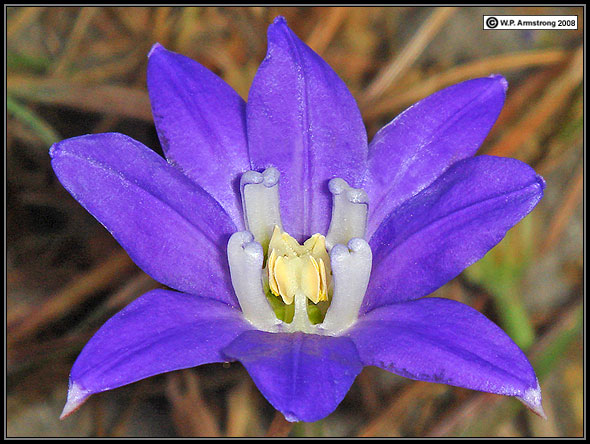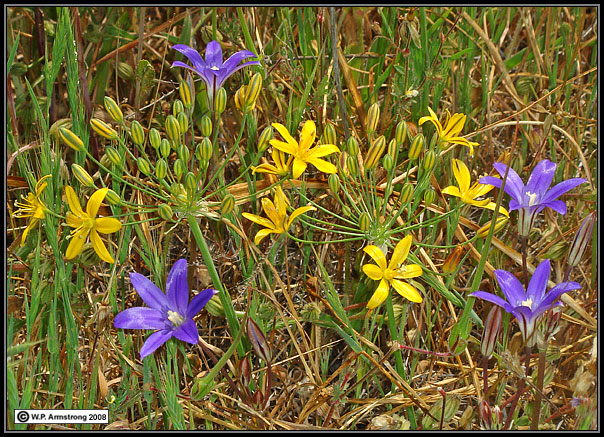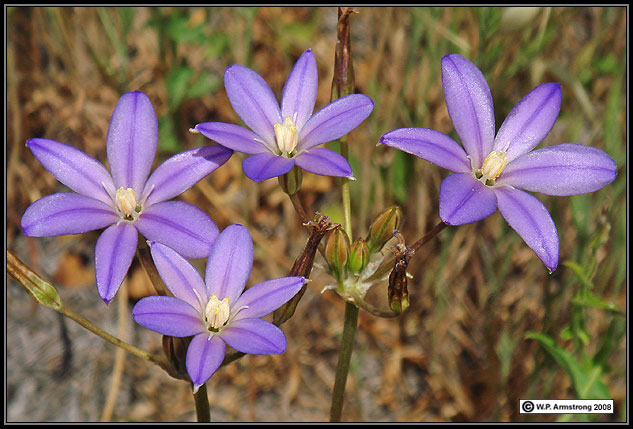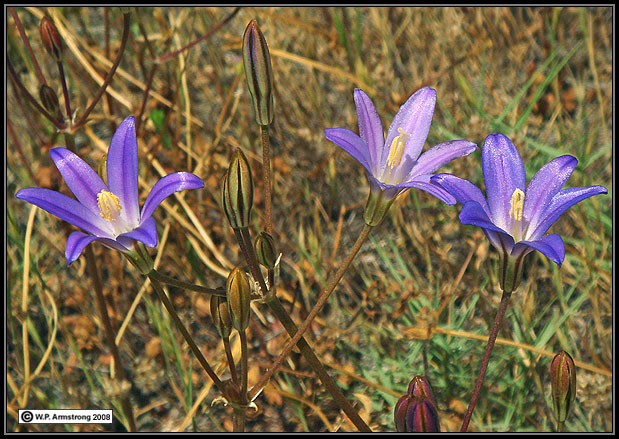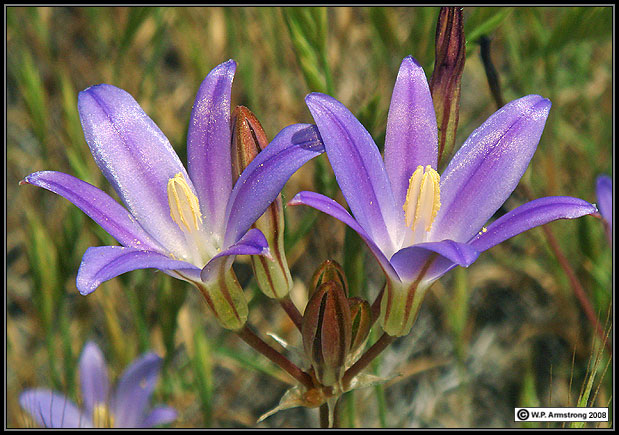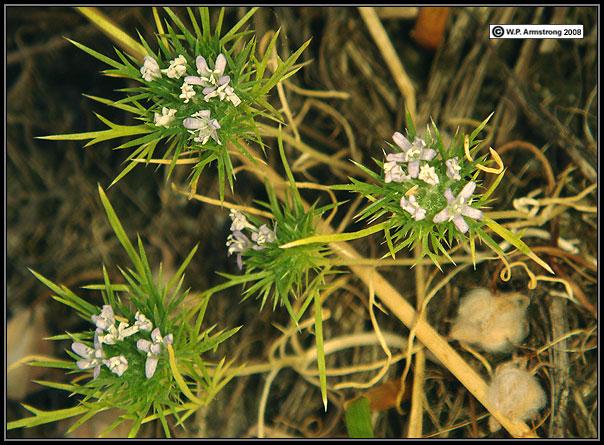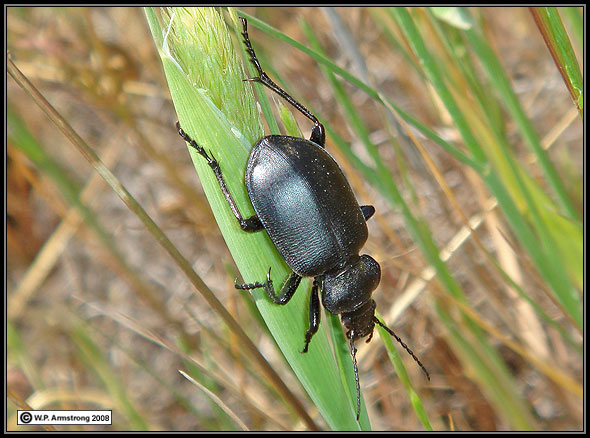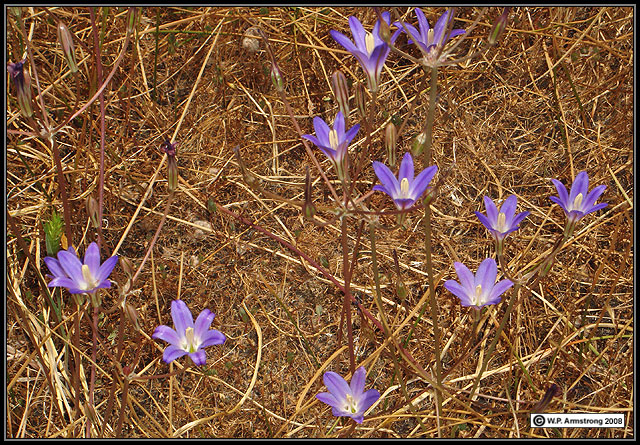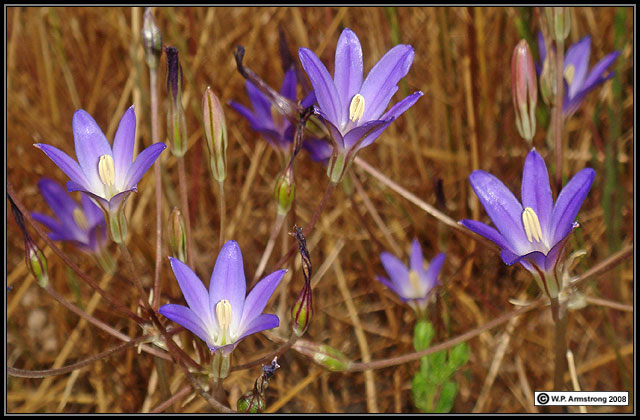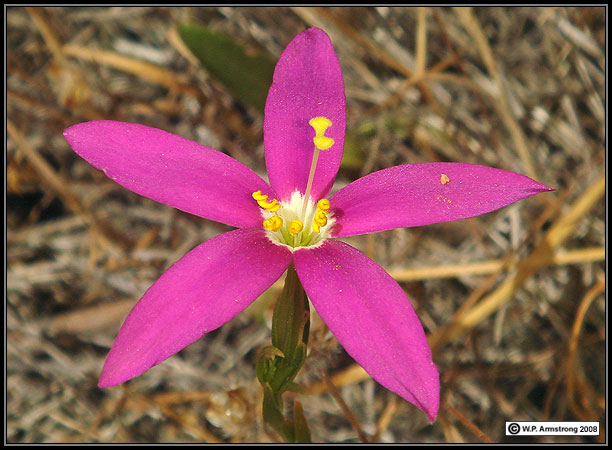|
San Marcos Vernal Pool Area 2008
San Marcos Vernal Pools Spring 2008
|
W.P. Armstrong, 2 May 2008
|
|
Note: The Brodiaea, that I referred to as "Coastal BTK," is listed as a possible
undescribed taxon under B. jolonensis in the revised Jepson Manual II (2011)
|
|
San Marcos vernal pool with Owens Peak (Palomar College "P" Hill) in the distance. Two vernal pools on this property were literally teeming with San Diego fairy shrimp on 10 January 2008. Fairy shrimp in this field have survived years of drought in desiccated mud. They have also survived the detrimental effects of people, including many years of trash dumping and offroad vehicles.
|
|
San Diego Fairy Shrimp swimming in vernal pool. Photo taken at water surface in shallow Petri dish with Sony V-3. Image enhanced and enlarged with Photoshop and Genuine Fractals. The largest individuals are 3-4 mm long.
|
Vernal Pools After Rains Of February 2008
|
Fresh tire tracks in water-logged clay soil (23 February 2008).
|
Vernal Pools During March & April 2008
Brodiaea Family (Themidaceae)
|
Tire tracks through field of Dichelostemma capitatum ssp. capitatum.
|
|
Closer view of Dichelostemma capitatum ssp. capitatum.
|
|
Common muilla (Muilla maritima).
|
|
Goldenstar (Bloomeria crocea ssp. crocea).
|
|
Leaves of dense colonies of Brodiaea species.
|
Lily Family (Liliaceae)
|
Star lily (Zygadenus fremontii var. minor).
|
Bellflower Family (Campanulaceae)
|
Toothed Downingia (Downingia cuspidata).
|
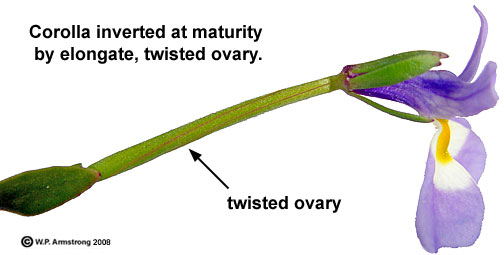
|
Inverted, epigynous flower of Downingia cuspitata. The elongate, twisted ovary results in a flower that is inverted with the two lower corolla lobes on top. What appears to be a striped pedicel is actually the ovary or hypanthium.
|
Legume Family (Fabaceae)
|
Arroyo lupine (Lupinus succulentus).
|
Snapdragon Family (Scrophulariaceae)
|
Owl's Clover (Castilleja densiflora ssp. gracilis)
|
|
The erect galea (white arrow) of Castilleja densiflora ssp. gracilis is puberulent (slightly pubescent). The galea of C. exserta ssp. exserta has much longer hairs that are described as densely shaggy-hairy or bearded.
|

Castilleja exserta ssp. exserta
|
|
The above species of owl's clover (Castilleja densiflora ssp. gracilis) was formerly placed in the genus Orthocarpus. In older references it is listed as Orthocarpus densiflorus var. gracilis. The individual flower superficially resembles an owl. White-flowered individuals can be found within large populations in coastal San Diego County. This image was taken in the San Marcos vernal pool field in 2005. The individual flower of another species of owl's clover in San Diego County (C. exerta ssp. exerta) is shown at left. The uppermost corolla beak (galea) is more pubescent (densely bearded). In older references it is listed as Orthocarpus purpurascens var. purpurascens.
|
|
Morning-Glory & Euphorbia Families (Convolvulaceae & Euphorbiaceae)
|
Two small, inconspicuous annual wildflowers that grow on heavy clay soils in coastal San Diego County. Left: Clay bindweed (Convolvulus simulans). B: Warty fruit spurge (Euphorbia spathulata). Although the latter spurge superficially resembles the common weedy spurge (E. peplus), it differs in its serrulate leaf margins, warty ovary (covered with tubercles), and oval glands without appendages.
|
|
Typical San Diego County vernal pool topography with raised "Mima mounds" and low depressions that fill with water. Black mustard (Brassica nigra) has colonized the raised mounds where gopher activity has made the soil loose and soft. Thirty years ago these mounds were commonly occupied by Burrowing Owls. A large shopping center, like the one in the distance, is perhaps the greatest threat to this marvelous vernal pool ecosystem.
|
Brodiaea Family (Themidaceae)
|
Brodiaea terrestris ssp kernensis. The shape and size of this flower closely matches the populations of BTK on the Santa Rosa Plateau of Riverside County. In general, the flowers are larger than B. jolonensis in Monterey County and the staminodes are more conspicuously hooded. The chromosome number of San Marcos BTK is at least three times greater than B. jolonensis in Monterey County. The scattered white specks on flower are pollen grains.
|
|


